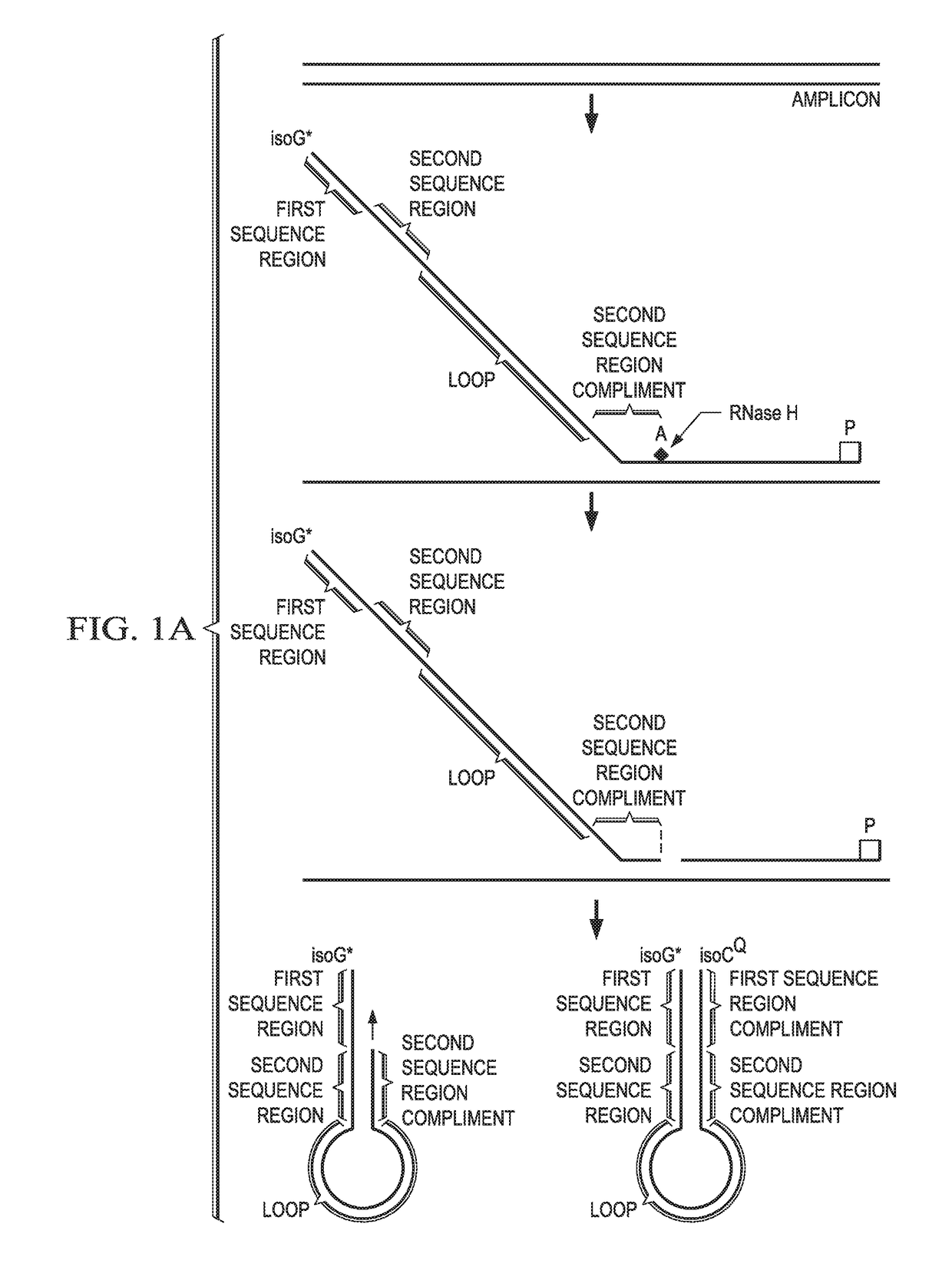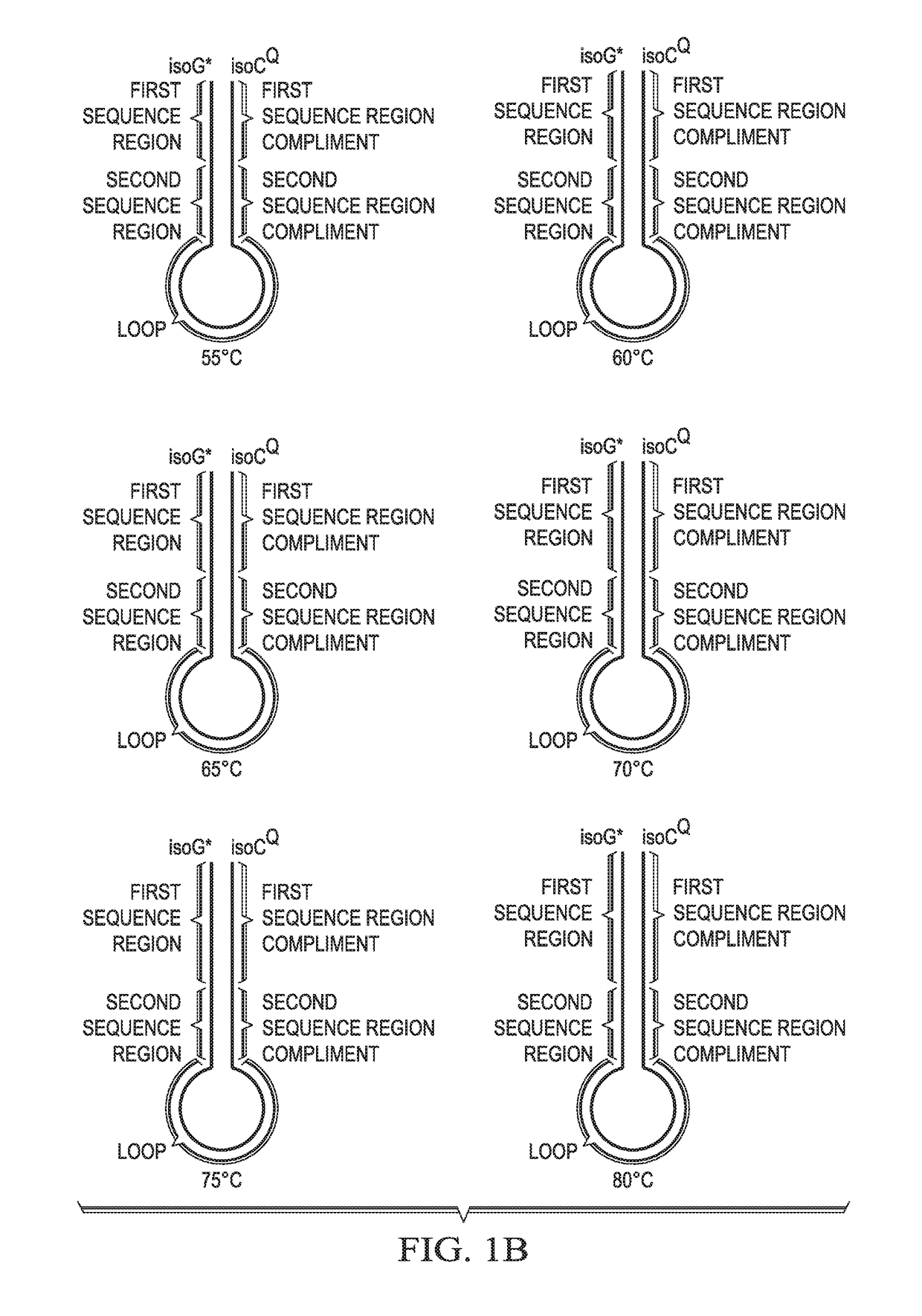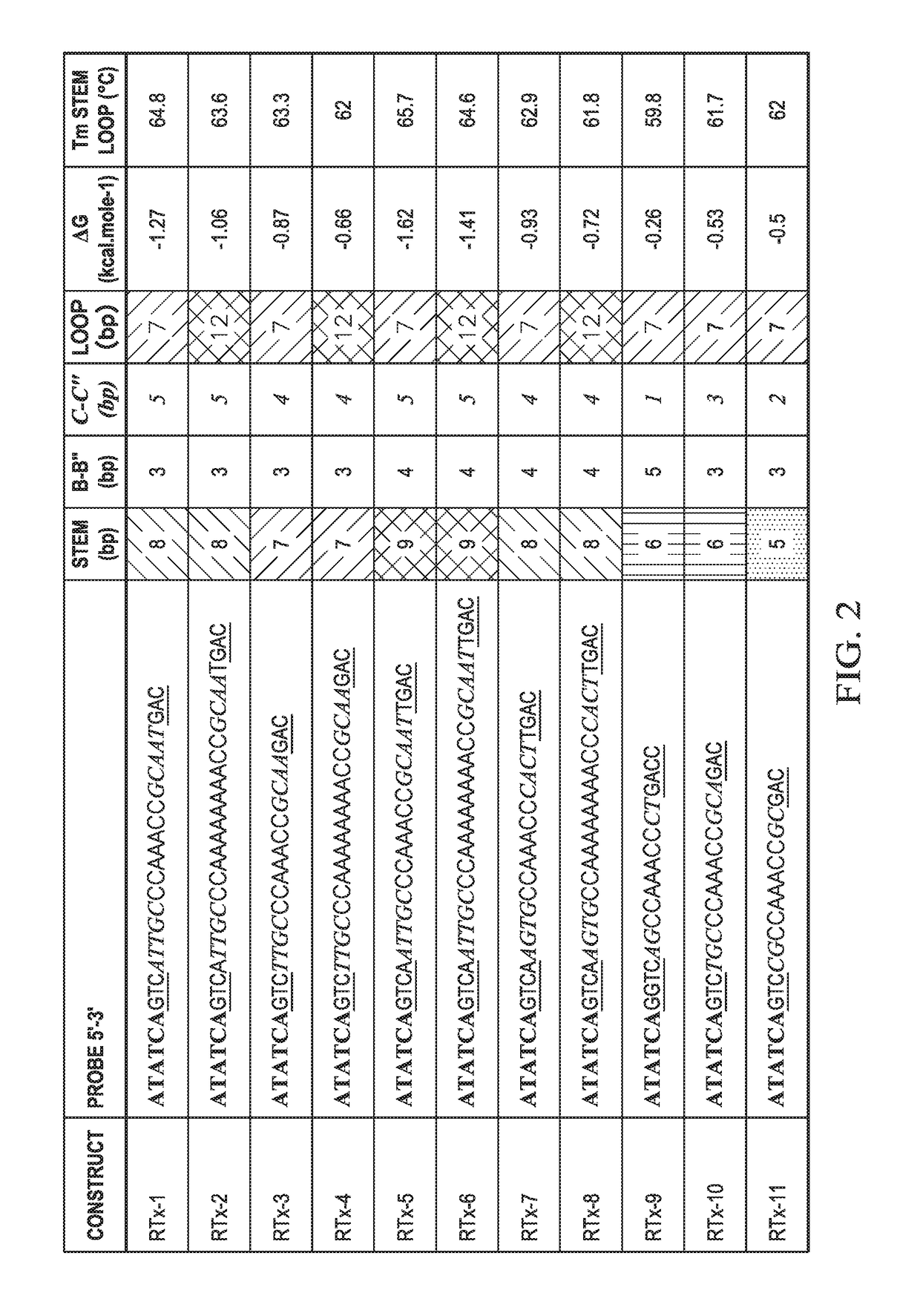Probes for improved melt discrimination and multiplexing in nucleic acid assays
a nucleic acid assay and probe technology, applied in the field of molecular biology, can solve the problems of limited multiplexing capability of current real-time pcr, difficult to quantify the starting template, and difficulty in achieving the detection of nucleic acids, and achieve the effect of increasing the multiplexing capability of detectable probes
- Summary
- Abstract
- Description
- Claims
- Application Information
AI Technical Summary
Benefits of technology
Problems solved by technology
Method used
Image
Examples
example 1
e Probe Systems
[0151]Solution phase multiplexing strategies for molecular assays rely on the use of multiple fluorophores in conjunction with generation of multiple fluorescence melt curves for detection of >10 targets. Various embodiments disclosed herein provide a real time probe based chemistry that allows higher multiplexing capabilities to be achieved by utilizing extendable hairpin probes to create multiple melt curves per channel. An example of probes for use in this system is shown in FIG. 1A. In this example, the cleavable probe comprises a reporter-labeled isoG nucleotide (“isoG*”) at its 5′ end, a first sequence region (“Tag A”), a second sequence region (“Tag B”), a loop sequence, a sequence region that is the reverse compliment of Tag B (“Tag B complement”); and a sequence complementary to the target amplicon (indicated as “A”). The cleavable probe also comprises one or more ribonucleotides (indicated by the solid square) in the “A” sequence and may comprise a modificat...
example 2
l Hairpin Probe Detection Systems
[0171]A further example of a hairpin probe detection system is shown in FIG. 12. The reporter probe comprises a reporter-labeled isoC nucleotide (“isoC*”) at its 5′ end, a first sequence region (“region 1”), a sequence that includes isoG and / or isoC positions (the “isoprimer”); and a sequence complementary to the amplicon (indicated as “A”). The sequence that is complementary to the amplicon also includes at least one ribonucleotide position. In the presence of a target amplicon the reporter probe hybridizes to the amplicon and is cleaved at the ribonucleotide position by RNase H. Following cleavage, the reporter probe can hybridize to a capture oligonucleotide (“capture oligo”), which comprises a capture segment complimentary to the isoprimer and, optionally, a portion that “A” sequence, followed by a mirror region 1 and a 3′ unlabeled isoC. Extension of the reporter probe will synthesize sequences complementary to the mirror tag on the capture olig...
example 3
irpin Probes with Extension Blockers in Reverse Transcription PCR
[0176]Fwd and Rev primers were combined in a well with either ATG0015 probe or T-FL-RTx2c probe, which differed only in that ATG00015 probe contained a 3 Carbon spacer (iSpC3) in the loop region and T-FL-RTx2c did not. These were combined with PCR master mix and thermal cycled followed by a melt analysis.
ATG0015: / 56-FAM / / iMe-isodC / ATATCAGTCATTTGCCCAAAA(SEQ ID NO: 24) / iSpC3 / AAACCGCAAATGAC rCAT GAG ACAGTA TAG TAG CGC TGA (SEQ ID NO: 25) / 3SpC3 / T-FL-RTx2c: / 56-FAM / / iMe-isodC / ATATCAGTCATTTGCCCAAAAAAAACCGCAAATGAC rCATGAG ACA GTA TAG TAG CGC TGA (SEQ ID NO: 15) / 3SpC3 / Fwd Primer-(SEQ ID NO: 22)GAA GCA TTT GAA ATA GCA GAA GG Rev Primer-(SEQ ID NO: 23)CAC AGA GCG TTC CTA GTT TTA CT
[0177]Reverse transcription PCR was performed without template to monitor for non-specific interactions that would cause a change in signal during a melt analysis. The below PCR master mix was created for a 25 μL reaction and run on an ABI Fast 7500 r...
PUM
| Property | Measurement | Unit |
|---|---|---|
| volume | aaaaa | aaaaa |
| temperature | aaaaa | aaaaa |
| temperature | aaaaa | aaaaa |
Abstract
Description
Claims
Application Information
 Login to View More
Login to View More - R&D
- Intellectual Property
- Life Sciences
- Materials
- Tech Scout
- Unparalleled Data Quality
- Higher Quality Content
- 60% Fewer Hallucinations
Browse by: Latest US Patents, China's latest patents, Technical Efficacy Thesaurus, Application Domain, Technology Topic, Popular Technical Reports.
© 2025 PatSnap. All rights reserved.Legal|Privacy policy|Modern Slavery Act Transparency Statement|Sitemap|About US| Contact US: help@patsnap.com



